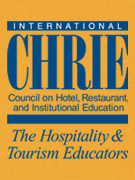Publication Date
2017
Executive Summary
Purpose: This report explores the host destination’s response to the 2014 FIFA World Cup. The study establishes how the hotel Key Performance Indicators (KPIs) of two of the main cities in Brazil reacted to the World Cup.
Originality/value: Exploring Brazilian hotel revenue managers’ responses to a major sporting event in Latin America is the main contribution of this research report.
Relevance of the topic: Several business sectors in the travel and hospitality industry experience distinctive positive and negative performance for hosting mega-sporting events. The findings of this research report will be helpful for hotel revenue managers who regularly propose strategic pricing strategies. This report examines the response to the 2014 FIFA World Cup which is determined by the variance in the hotel key performance indexes: occupancy, average daily rate (ADR), revenue per available room (RevPAR), and supply.
Design/methodology/approach: Using data gathered from Smith Travel Research (STR), this research report distinctly displays how two of the main Brazilian host cities (São Paulo and Rio de Janeiro) reacted to the World Cup. The obtained hotel KPIs represented annual data three years before the event and year after the event. The STR data entailed monthly hotel-level performance information, rooms revenue and rooms sold (demand) from the period of 2011-2015 containing a broad sample of Brazilian hotels in São Paulo and Rio de Janeiro.
Key findings: Results of the analysis for São Paulo suggest that supply level did not increase drastically during the sporting event. However, ADR levels increased significantly during the event. Additionally, the variances in occupancy in 2014 echo with the variances in ADR in the same time, showing the elasticity of price. Results of the analysis for Rio de Janeiro suggest that supply volumes stay consistent before, during, and after the sporting event. The findings suggest that ADR and RevPAR were quite related, with notable increases and declines before and after the event during the comparable months in previous years.
Implications for practice and policy: Our findings contained expected and unexpected results for hotel managers. For instance, Rio de Janeiro experienced growth of hotel room supply during the mega event. For this city, the drastic increase in ADR and supply did not result in a sharp decrease of their hotel occupancy rate. Other results suggest that São Paulo did not experience any changes in their hotel room supply level during the event. The performance of the occupancy rate still shows differences. For São Paulo, although there is no supply increase of the hotel industry, the occupancy rate still dropped during the mega event. This report lends support to the theory of price inelasticity of demand during mega sporting events, such as the FIFA World Cup.
Recommended Citation
Barreda, Albert A.; Zubieta Zamudio, Sandra; Chen, Han; Cassilha, Marina; and Kageyama, Yoshimasa
(2017)
"Pricing decisions during the FIFA 2014 World Cup: São Paulo and Rio de Janeiro,"
ICHRIE Research Reports: Vol. 2:
Iss.
1, Article 3.
DOI: doi.org/10.61701/288703.10
Available at:
https://via.library.depaul.edu/ichrie_rr/vol2/iss1/3


